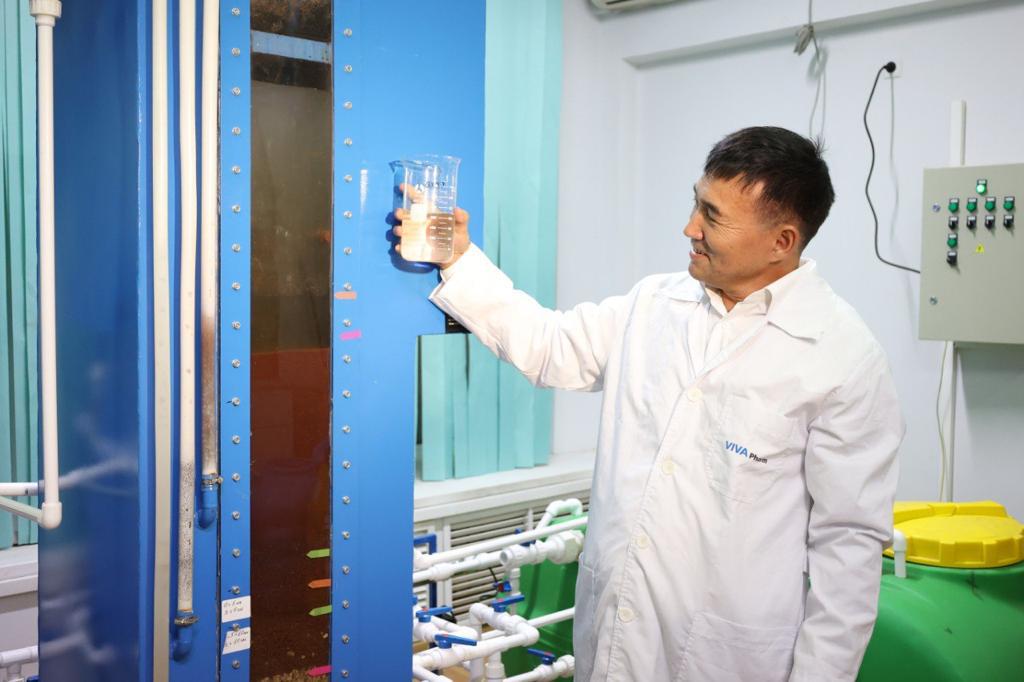An affordable water purification system developed by Satbayev University scientists

Satbayev University
Published on 24 October 2023

Water is the source of life. And this, in general, is not news. But lately, we have been hearing more and more about the shortage of water resources, which can become a global problem. According to World Bank forecasts, the volume of water resources in Kazakhstan will decrease from 90 to 76 m3 per year by 2030. This means that the water shortage in the country in 8 years will be about 12-15 m3 per year, that is, about 15%. By the way, residents of remote Kazakh villages have been living without clean drinking water for decades. And this problem persists to this day.
Slow-acting filters are the first type of filters that have begun to be used in the practice of water treatment. In 1829, John Simpson built sand filters for the London water supply, which were called English, or slow.
"Slow-acting filters are used for non-reactive clarification and partial water discoloration from surface sources if its color does not exceed 35-50 degrees. According to the method of regeneration of the filter loading, the following designs are distinguished: with the removal of the polluting layer and washing it outside the filter, with the washing of the contaminated layer in the filter during mechanical loosening and flushing of impurities," the scientists explain.
Slow filters have a unique ability to remove not only turbidity and color from the water but also specific organic, and inorganic contaminants and bacteria. At the same time, no chemical reagents are used.
"The filter has a double bottom: its lower part is solid; the upper part is perforated. A drainage space is formed between them, into which the filtered water enters. A layer of crushed stone or gravel (0.4-0.45 m thick) is placed on the upper part of the bottom, and a filter layer of quartz sand (0.8-0.85 m) is placed on it, to which the purified water is supplied. The filtration process on a slow filter approaches the natural one: water passes through the filter slowly, at a speed of 0.1-0.2 m/h. Under such conditions, almost complete clarification of water and its purification from microorganisms by 95-99% is achieved."
As the water is filtered, a biological film is formed on the surface of the filter layer of sand from the retained organic residues, minerals, colloidal particles, and a large number of microorganisms. It is formed within a few days - this period is called the period of "maturation" of the filter. This film retains a fine suspension that would pass through the pores of the sand. That is, film filtration of water takes place on a slow filter. The film itself also contributes to mineralizing the organic substances, the destruction of microflora, and the reduction of oxidation and color.
The use of crushed shungisite (expanded clay, zeolite, volcanic slags, burnt rocks, clinoptilolite) instead of quartz sand reduces the formation time of a biologically active film by 3-5 times.
The process of "maturation" lasts until the number of bacteria in the filter decreases to 100 colonies (A colony is a visible isolated cluster of representatives of one type of microorganisms. – Note of the author.) per 1 ml of water. That is until the water meets the requirements for drinking water quality. After that, the water can be eaten.
"The useful operation period of the filter continues until the available pressure is exhausted (usually it reaches 15-30 days, sometimes more). After that, the filter is stopped and the regeneration of the upper layers of the load is started, removing a 2-3-centimeter layer or loosening it with simultaneous water supply to the filter surface to flush the impurities into the sewer collector," say scientists of KazNRTU named after K.I. Satbayev.
Traditional technologies of water treatment and water purification provide a complex technology consisting of several processes: settling, filtering, and disinfection. At the same time, the existing treatment facilities no longer give the desired result due to the heavy pollution of reservoirs. Slow filters, scientists say, are easy to build, and low-cost to maintain, while they can provide clean water to a small village. The project is being implemented with the support of the Ministry of Science and Higher Education of the Republic of Kazakhstan.
